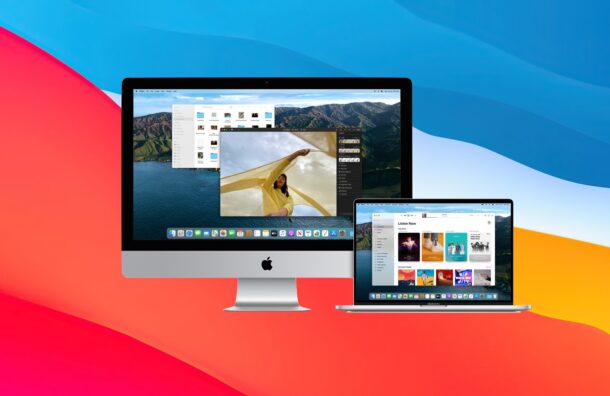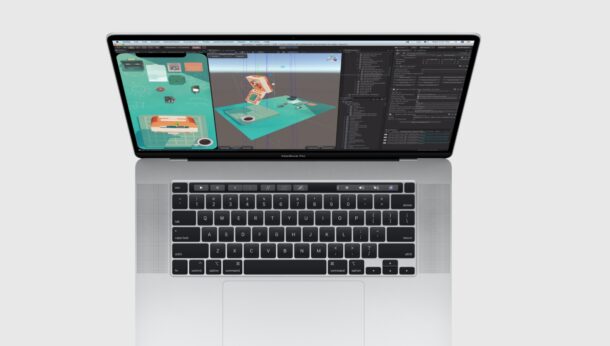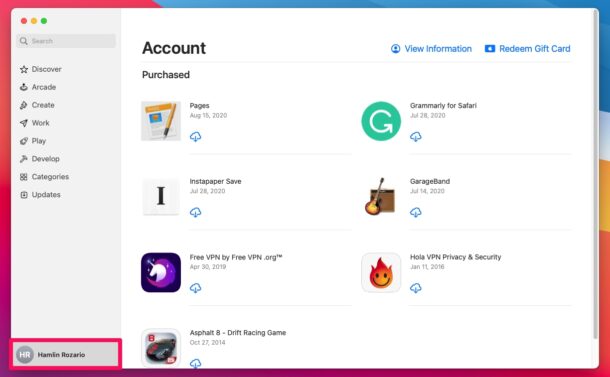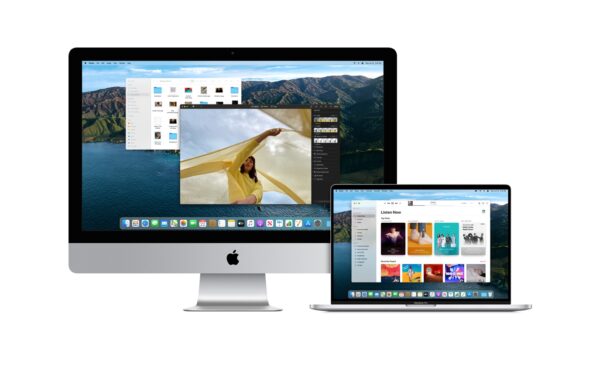How to Prepare for MacOS Big Sur

The official release of macOS Big Sur is here today, November 12, and if you’re thinking of installing the latest and greatest macOS release then you might want to take a few preparations first before jumping ahead with the major Mac system software update.
According to Apple, macOS Big Sur will be the biggest visual change that the operating system has seen in years, along with several other improvements to privacy, Safari, Maps, and Messages. You might be excited to install Big Sur the day Apple starts rolling it out to the general public, but for now, you can prepare your Mac for the software update and be ready once it’s available.
Here are a few things to keep in mind before you download macOS Big Sur to make sure the update process goes as smoothly as possible.
How to Prepare for MacOS Big Sur
Checking system compatibility, looking for incompatible apps, updating apps, backing up the Mac, are all necessary to make sure you don’t run into any issues while installing macOS Big Sur on your computer. So, without further ado, let’s get started.
1. Check System Compatibility
Just like any other major software update, not all Macs are officially supported to run macOS Big Sur, as certain hardware requirements need to be met. Whether you own MacBook, iMac, Mac Mini, or Mac Pro, you should be fine as long as you purchased it as new in the last few years.
To make things easier for you, we’ve compiled a list of all the Mac models that are capable of running macOS Big Sur officially. You’ll notice that any model that was built in 2013 or later supports Apple’s newest operating system. However, the 2012 variants of the MacBook Pro, MacBook Air, and iMac that are capable of running macOS Catalina have been left out.

In addition to these hardware requirements, you’ll also need 20 GB of free space on your storage drive to install and update to macOS Big Sur. So, if your Mac is running low on space, now would be a good time to remove unwanted files and delete unnecessary apps from the system.
2. Update Your Apps
Check if there are any available updates for the apps that you’ve installed on your Mac. This is because some apps may receive optimization updates for the latest version of macOS when it’s made available.

To update your apps, launch the App Store on your Mac and click on your Apple ID name located at the bottom-left corner. From here, you should be able to view all the available updates and download them. Apps obtained elsewhere may require updating through the app itself, or through the developer or manufacturers website.
That being said, keep checking for app updates once you update to macOS Big Sur as well, since app developers will continue to release compatibility updates for the latest version of Apple’s desktop operating system.
3. Regarding 32 bit Apps
If you’re one of those users who’re planning to update to macOS Big Sur after skipping macOS Catalina, say from Mojave or High Sierra, be aware that 32-bit apps aren’t supported anymore. Therefore, if you have any 32-bit app installed on your Mac, it will no longer run after the update.
Not sure which apps you’ve installed are 32-bit? Don’t worry. You can easily find all 32-bit apps on a Mac with the System Information tool. Check for a newer 64-bit version of the same app and install it before updating your Mac. Fortunately, most apps have been updated with 64-bit support, but for some users with older apps this could be a deal breaker.
4. Backup the Mac
This is probably the most crucial step you need to follow before installing any major software update on your macOS system. Software updates can go wrong at any given time and you could potentially end up bricking your Mac, or permanently losing data. Therefore, having sufficient backups is essential whenever you’re planning to install a new major version of macOS. Another advantage to a complete Time Machine backup is that it allows you to easily roll back the update without losing your data in the odd event that things go wrong.
To back up the data stored on your Mac, you’ll need to use Time Machine. For more information, you can read this to learn how to set up Time Machine on your Mac for backups. To access it, go to System Preferences on your Mac, choose Time Machine and then click on “Select Backup Disk”. To back up on a regular schedule, an external storage drive needs to be connected to the Mac.

5. Install macOS Big Sur
If you’ve completed all the above steps, you’re ready to install macOS Big Sur, which is available as a free download.
Alternatively, you can also check for new updates by going to System Preferences -> Software Update on your Mac. Here, you’ll be notified when macOS Big Sur is available. Click on “Update Now” to begin the installation process. The installer file that’s downloaded on to your Mac will be removed automatically once the update completes.
People who want to clean install macOS Big Sur on their devices will rely on the installer that’s made available on the App Store instead. This method can be used if you want to create a bootable macOS Big Sur installer drive.

6. Keep a Spare Copy of macOS Mojave or Catalina
If you don’t particularly have a good time with macOS Big Sur after updating or if you’re facing multiple issues, you may want to roll back to macOS Mojave or MacOS Catalina. In these cases, keeping a spare copy of that installer around would prove to be extremely useful.
So, if you’re interested, here’s how you can download the full macOS Catalina or Mojave installer on your Mac that’s already running macOS Catalina. You can also create a bootable macOS Catalina installer drive with this file to perform a clean install on the Mac. We recommend this step for advanced users who would like to revert from the Big Sur update for any reason.
7. Consider Waiting to Update to Big Sur
MacOS Big Sur represents some significant changes to the Mac operating system, and sometimes it can be prudent to wait.
Rushing right away into updating system software to the latest version may not be the best option for everyone, especially when it comes to major software updates like macOS Big Sur. Playing the waiting game and seeing if other users are reporting issues after updating their own Macs is a strategy employed by people who are a bit more cautious. Apple usually takes a couple of weeks to iron out the bugs and issue refined updates, unless it’s a hotfix that takes just a day or two to arrive.
For those who follow this cautious approach, some even wait for a major point release or two, for example macOS Big Sur 11.1 or MacOS 11.2, 11.3, or even later, depending on their individual preferences. If your current system is working just fine and you need it to continue to work flawlessly, delaying a major update like Big Sur is certainly reasonable until you’re more comfortable with the update process, or the software itself.
–

Did you follow these steps to prepare your Mac for the macOS Big Sur software update? Did with miss anything? Do you have any particular tasks you focus on before installing major software updates? Are you looking forward to updating your Mac to Big Sur? Or, are you skipping Big Sur for now? Have you checked out all the new features that it has to offer? Share your thoughts, experiences, and opinions on Big Sur in the comments!


Carbon copy does work and they are close to a full fix of the issues with the signed boot volume.
One thing I would like is to know how to remove the childish gaudy boot wallpaper- been looking but no leads. It seems that the background is not stored where previous versions of MACOS kept this but I’m not sure whee else to look
Finally, will this site change its name to OS11daily or OSXIdaily?
;-)
I downloaded Big Sur but am disappointed in the small fonts on the desktop and menu bar. How can I increase the size?
You can’t increase the font size directly on the Mac UI, unfortunately. But you can change the screen resolution, which will make everything larger, including font sizes.
https://osxdaily.com/2016/05/23/increase-system-text-size-mac-os-x-scaled-resolution/
That’s the only option, which is curious given Apple’s insistence they value accessibility.
I agree with you, I think many of the fonts on Mac are so small, faint, and thin that they’re hard to read. It didn’t used to be that way, but then they changed the system fonts and UI and it went downhill from a visibility perspective from there. Maybe one day Apple will allow us to increase the Mac font size system wide, like iOS and iPadOS.
Here’s how you prepare. Expect it to be like every previous Apple’s latest & greatest OS. Buggy! Thousands of Mac User’s on the forums trying to help each other get something or the other to work that used to before while Apple takes big bites out of our wallets.
I’d like Apple’s latest OS to be an improvement on the previous OS and so on. Just fix the basic old “things” that we already have and use. Like Notes and Contacts and Reminders and Text Edit that stop working for no reason and you have to restart the computer; all after Apple’s ”updates”.
Fix Disk Utility that insists that everything is ok and the operation was successful, meanwhile I have to restart to stop the bouncing Text Edit and frozen Contacts icons. How about the “syncing” that is supposed to work between my iPhone and my MacBook Pro. After the “update, I had to search the help forums to fix synching issues. The new iPhone “update” just froze out Reminders. I have been an Apple user since 2004 and probably will be until I die, but Android is certainly looking appealing.
How about the latest be that they actually help all their customers that are actually helping EACH OTHER in the troubleshooting forums. They could stop behaving like car manufacturers who unveil a new model every year meanwhile there are continuous faults and recalls on every previous model, one would think they were new to the business. Apple’s example: 2015 was the last year they put out a decent MacBook Pro; And even then they started leaving out ports, today a Macbook Pro owner has to have a $300 dongle to hook up to anything he or she already owns.
Apple: Cut the Crapple and fix your Old Sh*t before you spring “New Sh*t” on us.
What about tips on how to make a USB bootable…
#6 & #7 for sure. Even Release Candidate 2 is buggy and I no longer trust Time Machine to function properly in the event of a boot disk failure – and even old standbys like Carbon Copy Cloner don’t provide a bootable backup right now
SuperDuper! doesn’t work with Big Sur, so that’s a dealbreaker for me. Until I can backup my machine with SD, I am not going to upgrade.